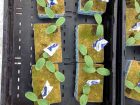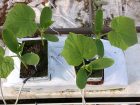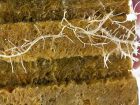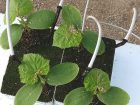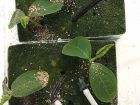
Features
Structures & Equipment
Water and irrigation
EC Management Under Different Light Conditions
Before we had good sunlight sensors, growers managed crop irrigation based on visual reports.
December 9, 2015 By Dr. Mohyuddin Mirza
January 2016 — Growers in Canada know very well that natural winter light conditions are different than those in the fall, spring and summer. Sunlight is reported in many different ways. One can find total sunlight hours, light intensity during the seasons and light spectrum information. For example, I was looking at Edmonton, which is 53 degrees North latitude, and found the average of several years in terms of per cent sun, hours of sunshine and number of days. On an annual basis, the city has 2,345 hours of total sunlight and 325 days of sun.
I remember when before we had good sunlight sensors, growers managed crop irrigation based on visual reports – it is sunny, it is cloudy, it is partially sunny and many scenarios in between! Our recommendations used to be based on “sunny days,” “cloudy days,” and many other variations.
We can measure sunlight now through sensors, and our computers can tell us how many joules/cm2 or watts/m2 of light is available. Joules are cumulative. Most of the time, irrigation is triggered by joules/cm2. Now we are getting more familiar with moles and micromoles/m2/second or per day. Micromoles/m2/second are accumulated and reported as moles/m2/day.
SO WHAT DOES LIGHT HAVE TO DO WITH ELECTRICAL CONDUCTIVITY (EC)?
EC is a common tool growers use to test their fertilizer solutions, leachates and water. EC meters are readily available and EC can be measured quickly. Beside hand-held units, we have EC dosing systems so that fertilizer solutions can be delivered to plants at whatever EC we want.
However, I am finding that managing EC on a daily basis is getting a little complicated for growers. This is because when plants use up nutrients, the EC should be lower, but in many cases it goes up when the plant is extracting more water from the rootzone nutrient solution. That usually happens under high transpiration during summer light conditions.
EC management of vegetable crops depends on the amount of light available to the plants. Simply stated or understood, the lower the light, the higher the EC will be, and vice versa. If the light is high, then the EC will be lower.
Let us expand this point further. I remember that when crops were grown in soil – and that was common in many provinces of Canada – the EC of soil was recommended to be below 2.0 to 2.5 millimhos (mmhos/cm) or millisiemens (mS/cm).
Growers would take soil from the top six inches, add water, make a paste and check the EC. The leachate was not collected and there were no suitable guidelines available to manage EC.
Many growth problems were diagnosed when one saw salt crust built up on the soil surface. That was a sure way to confirm that the “salts” are very high in the rootzone!
When soilless cultivation systems were developed and adopted, researchers started developing guidelines for fertilizer solutions and leachate. A practical principle was that leach EC should be slightly lower than the feed EC. If leach EC started going higher than the feed, growers were directed to increase the volume of feed solution, leach more and bring the EC down. This approach is still practised, but it has been found that in spite of more leaching, the EC was still rising in the leach. This is because under high light conditions, plants need more water to be transpired through the leaves and plants can selectively absorb more water and leave the nutrients in the rootzone. This is why EC will rise by several units in the leach.
The pictures in this feature explain what I want to say.
Picture 1: Young cucumber seedlings in rockwool blocks. The fertilizer solution was applied at an EC of 2.4 mS/cm. Within two days, the squeeze EC jumped to 3.5 mS/cm. This was due to evaporation of water from the surface of the rockwool block. In this case the grower was advised to fertilize once daily, and the rest of the time to use pH adjusted plain water. The EC was maintained just around 2 mS/cm.
Picture 2: The same cucumber seedlings grown on lower EC values at two true leaf stage.
Picture 3: Very good root development is seen on these seedlings with lower EC
Picture 4: Although feed EC on those seedlings was around 2.4 mS/cm, the squeeze EC jumped to over 5.0 mS/cm. The leaves became very dark green. One can see fairly good algae growth on the surface of rockwool blocks.
Picture 5: Root development on the same seedlings was less and the roots were also thicker and stubby with less development of water-absorbing root hair.
Picture 6: Under very high light conditions, in this case it was over 2200 Joules, the leaves rolled inward. High EC in the block combined with very high light caused these young leaves to roll. These leaves will revert to normal towards evening and at night time. This triggered a very generative response on these plants.
SO WHAT ARE THE FEW CROP MANAGEMENT TOOLS FOR VEGETABLES?
Adjust the EC of the feed based on light and the crops you are growing. Cucumbers generally need about 1.0 unit of EC less than that for tomatoes.
Leach EC is a good indicator of what is happening in the rootzone, but under heavy leach conditions, the leach EC may not be good enough to make decisions. I recommend that growers check the “squeeze” EC of the growing medium. I have found significant differences between leach EC and EC values obtained by collecting leach by squeezing the growing medium.
Plain, pH adjusted water can be used during the period when the Vapour Pressue Deficit (VPD) is over 8 grams/m3 of air. That is generally between 11 a.m and about 3 p.m in summer light conditions. That is the time when plants selectively absorb water, and salts are left in the rootzone solution. This causes the EC to increase dramatically.
Higher EC can turn the plant in a generative direction, while lower EC will turn the plant in a vegetative direction. So EC management is another tool to steer the plant in the direction you want.
EC has to be monitored and adjusted on a daily basis. Avoid wide fluctuations in EC during the fruiting periods of cucumbers, tomatoes and peppers. Tomato fruit will have blossom end rot under high light and high EC situations.
Dr. Mohyuddin Mirza is an industry consultant. He can be reached at drmirzaconsultants@gmail.com.
Print this page
